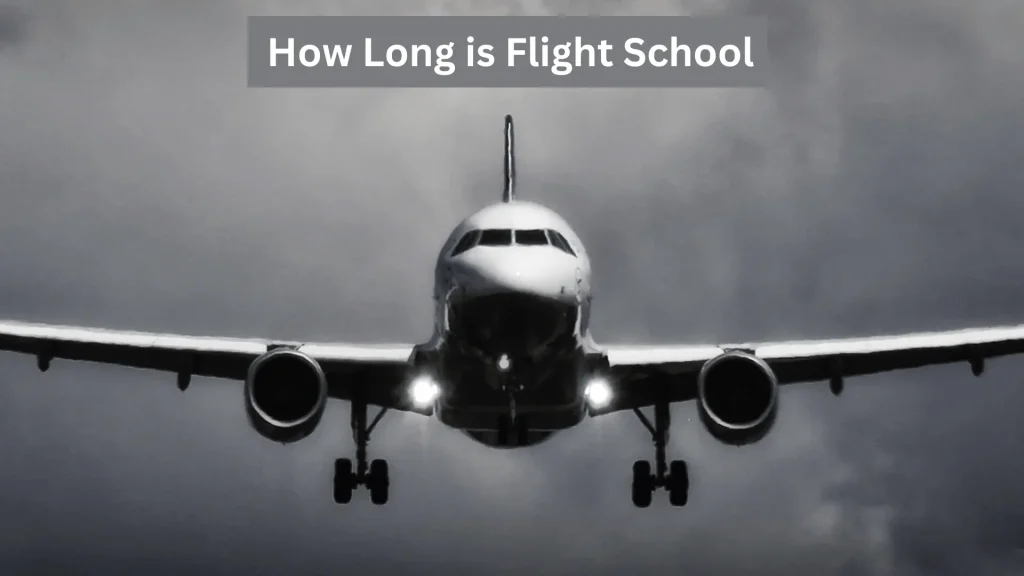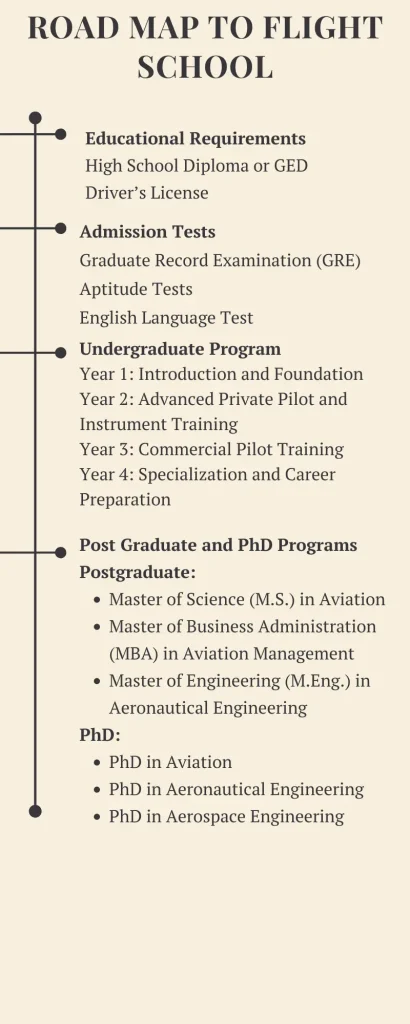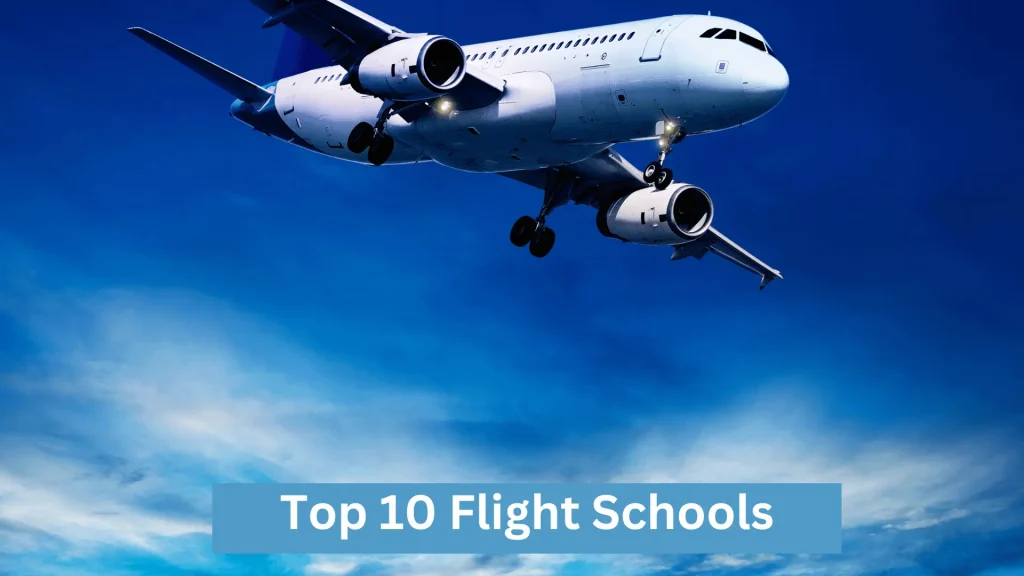How long is flight school? Flight school duration varies depending on the program and certifications pursued. Generally, it takes 2 to 4 years to complete an undergraduate program. Intensive courses or part-time training can affect this timeline. Flight school combines ground instruction and flight training to prepare students for a career in aviation.
What is Flight School?
Flight school is a specialized institution that trains individuals to become pilots. It offers programs covering essential aviation knowledge, practical flight training, and certifications required for various pilot licenses. Students learn about aerodynamics, navigation, aircraft systems, and aviation regulations, combining classroom instruction with hands-on flight experience.

In addition to technical skills, flight schools emphasize safety, decision-making, and professionalism. Graduates can pursue careers as commercial pilots, flight instructors, or airline pilots, equipped with the expertise to navigate complex aviation environments confidently.
How Long is Flight School?
The duration of flight school varies depending on the type of license a student is pursuing, the frequency of training, and individual aptitude for flying. Here’s a year-wise explanation of the undergraduate program for a Bachelor of Science in Professional Flight:
Year 1: Introduction and Foundation
Semester 1:
Introduction to Aviation: Overview of aviation history, industry structure, and basic principles.
Private Pilot Ground School: Classroom instruction covering the basics of flight, regulations, weather, navigation, and aircraft systems.
Private Pilot Flight Training I: Initial flight training leading to solo flight, focusing on basic maneuvers, takeoffs, landings, and pattern work.
General Education Courses: Basic college courses like English, Mathematics, and Science.
Semester 2:
Private Pilot Ground School II: Continuation of ground school with more advanced topics.
Private Pilot Flight Training II: Continued flight training, including cross-country flights and preparation for the private pilot checkride.
Aviation Safety: Introduction to aviation safety practices and principles.
General Education Courses: Further general education requirements.
Year 2: Advanced Private Pilot and Instrument Training
Semester 3:
Instrument Ground School: Classroom instruction on flying solely by reference to instruments, navigation systems, and instrument approach procedures.
Instrument Flight Training I: Initial instrument flight training, including basic instrument maneuvers and navigation.
Aerodynamics: Study of the forces acting on an aircraft and how they affect flight.
General Education Courses: Continued general education.
Semester 4:
Instrument Ground School II: Advanced instrument flying topics, including more complex approaches and regulations.
Instrument Flight Training II: Completion of instrument training, including cross-country flights and preparation for the instrument rating checkride.
Meteorology: Study of weather patterns, meteorological phenomena, and their impact on flight.
General Education Courses: Continued general education.
Year 3: Commercial Pilot Training
Semester 5:
Commercial Ground School I: Classroom instruction on advanced flight topics, including performance, regulations, and maneuvers required for commercial operations.
Commercial Flight Training I: Initial commercial flight training, focusing on complex maneuvers and advanced navigation.
Aviation Law: Overview of legal issues in aviation, including regulations, liability, and international law.
General Education Courses: Continued general education.
Semester 6:
Commercial Ground School II: Further instruction on commercial flight topics, preparing for the commercial pilot written exam.
Commercial Flight Training II: Completion of commercial flight training, including multi-engine training and preparation for the commercial pilot checkride.
Human Factors in Aviation: Study of human performance and limitations in the aviation environment.
General Education Courses: Continued general education.
Year 4: Specialization and Career Preparation
Semester 7:
Flight Instructor Ground School: Preparation for the flight instructor written exam, covering instructional techniques and regulatory knowledge.
Flight Instructor Training I: Initial flight instructor training, focusing on teaching techniques and flight maneuvers.
Crew Resource Management (CRM): Training on effective communication, decision-making, and teamwork in a multi-crew environment.
Aviation Management: Overview of management principles as applied to the aviation industry.
General Education Courses: Completion of remaining general education requirements.
Semester 8:
Flight Instructor Ground School II: Advanced topics in flight instruction, preparing for the flight instructor checkride.
Flight Instructor Training II: Completion of flight instructor training, including preparation for teaching in the aircraft.
Aviation Capstone Project: Integration and application of all knowledge and skills acquired throughout the program in a comprehensive project.
Career Preparation: Workshops and seminars on resume writing, interview techniques, and job search strategies in the aviation industry.
Additional Training and Certifications
Multi-Engine Rating: Some programs include multi-engine training within the commercial training, while others might offer it as an additional course.
Certified Flight Instructor (CFI) Rating: Typically obtained during the fourth year, allowing graduates to build flight hours while teaching new students.
Certified Flight Instructor – Instrument (CFII) Rating: Optional, but valuable for teaching instrument flying.

How to Enter Flight School
Educational Requirements
High School Diploma/GED: Most flight schools require applicants to have completed high school or obtained a GED.
Minimum Age: Typically, applicants must be at least 17 or 18 years old.
Math and Science Proficiency: Strong foundation in mathematics and physics is often recommended.
English Proficiency: Proficiency in English is essential, as it’s the international language of aviation.
Entry Tests
Aptitude Tests: Some schools require aptitude tests to assess spatial awareness, problem-solving skills, and hand-eye coordination.
Medical Examination: A valid FAA medical certificate (Class 1 or 2) is mandatory to ensure the applicant meets health standards for flying.
English Language Test: Non-native speakers might need to pass an English proficiency test, such as TOEFL or IELTS.
Application Process
Application Form: Complete and submit the flight school’s application form, either online or in paper format.
Personal Statement: Write a personal statement or essay detailing your interest in aviation and career goals.
Transcripts: Provide official transcripts from high school and any post-secondary education.
Letters of Recommendation: Submit letters of recommendation from teachers, employers, or mentors.
Interview: Some schools conduct interviews to assess the applicant’s motivation, personality, and suitability for the program.
Financial Aids
Scholarships: Many organizations and schools offer scholarships based on merit, need, or specific criteria related to aviation.
Grants: Government and private grants may be available to help cover tuition and training costs.
Loans: Federal and private student loans can be used to finance flight school education.
Work-Study Programs: Some flight schools offer work-study programs that allow students to work part-time in exchange for tuition assistance.
Military Benefits: Veterans and active-duty military personnel may qualify for financial aid through programs like the GI Bill.
Post Graduate and PhD Programs
Postgraduate Programs
Master of Science (M.S.) in Aviation:
Overview: Focuses on advanced aviation topics such as aviation management, safety, and human factors.
Duration: Typically 1-2 years.
Key Courses: Advanced Aerodynamics, Aviation Safety Management Systems, Airline Operations, Aviation Economics, Human Factors in Aviation.
Career Opportunities: Aviation consultant, airline management, safety officer, airport operations manager, aviation educator.
Master of Business Administration (MBA) in Aviation Management:
Overview: Combines business administration principles with aviation-specific knowledge.
Duration: Typically 2 years.
Key Courses: Aviation Finance, Strategic Management, Aviation Law, Marketing for Airlines, Leadership in Aviation.
Career Opportunities: Senior management roles in airlines, airports, aviation consulting firms, aviation logistics companies.
Master of Engineering (M.Eng.) in Aeronautical Engineering:
Overview: Advanced study of aircraft design, propulsion systems, and aerodynamics.
Duration: Typically 1-2 years.
Key Courses: Aircraft Design, Propulsion Systems, Flight Dynamics, Computational Fluid Dynamics.
Career Opportunities: Aerospace engineer, aircraft designer, research and development specialist, flight test engineer.
PhD Programs
PhD in Aviation:
Overview: Focuses on original research in various aspects of aviation such as safety, operations, and human factors.
Duration: Typically 3-5 years.
Key Components: Dissertation, advanced research methods, seminars in aviation topics.
Research Areas: Aviation safety, air traffic management, airport operations, aviation psychology, environmental impacts of aviation.
Career Opportunities: University professor, aviation researcher, senior roles in regulatory agencies, advanced consultancy positions.
PhD in Aeronautical Engineering:
Overview: In-depth research in the field of aeronautical engineering.
Duration: Typically 3-5 years.
Key Components: Dissertation, advanced engineering coursework, research seminars.
Research Areas: Aerodynamics, propulsion, aircraft structures, flight mechanics, aerospace materials.
Career Opportunities: Research scientist, aerospace engineer, university professor, industry R&D leader.
PhD in Aerospace Engineering:
Overview: Emphasizes research on space and atmospheric flight technologies.
Duration: Typically 3-5 years.
Key Components: Dissertation, specialized aerospace courses, research projects.
Research Areas: Spacecraft design, satellite systems, propulsion technologies, atmospheric flight mechanics.
Career Opportunities: Aerospace researcher, space mission designer, university professor, industry R&D executive.
Top 10 Flight Schools

University of North Dakota (UND) – Offers seven undergraduate and two graduate programs in aviation and aeronautics, with a range of specializations including safety, unmanned aircraft systems, management, and human factors.
Purdue University – Hosts 10 aviation degrees at all academic levels, focusing on contemporary applications of aviation technology, emphasizing key challenges such as sustainability, safety, and quality.
Massachusetts Institute of Technology (MIT) – Offers comprehensive aerospace engineering programs with advanced laboratories and research facilities.
Georgia Institute of Technology – Provides undergraduate degree programs in aviation and industrial technology, along with a graduate program offering an MS Quality Assurance degree.
Embry-Riddle Aeronautical University – Offers extensive aviation facilities, state-of-the-art labs, and advanced flight-training devices, including industry-standard flight simulators.
San José State University – Emphasizes leadership, professional development, and technical expertise in its aviation programs, and offers flight training at affiliated FAA-approved flight schools.
Florida Institute of Technology – Offers aeronautics, aviation administration, and aviation maintenance programs, along with an online master’s in aeronautics.
Western Michigan University – Provides comprehensive aviation programs covering various disciplines within the broad field of aviation and aerospace.
Hallmark University – Offers a Bachelor of Science in Aviation Maintenance with a comprehensive curriculum covering various aspects of aviation maintenance and technology.
Spartan College of Aeronautics and Technology – Offers a range of aviation programs including aviation maintenance, flight, and technology, with a strong focus on practical training and industry partnerships.
Factors Affecting the Length of Flight School
Several factors can influence the duration of flight school:
Type of License: The type of pilot license being pursued can impact the duration of training. For example, obtaining a commercial pilot license may take longer than a private pilot license due to the additional training requirements.
Frequency of Training: The frequency at which a student undergoes flight training can affect the overall duration of the program. Regular, consistent training may lead to faster progress and completion.
Individual Aptitude: Each student’s aptitude for flying can influence the time required to master the necessary skills and knowledge for licensure.
Program Structure: The structure of the aviation program, including the number of required flight hours, ground school, and specific course requirements, can impact the length of training.
Final Verdict
In conclusion, the length of flight school varies based on the type of license being pursued, the frequency of training, individual aptitude, and the structure of the program. Aspiring pilots should carefully consider these factors when planning their aviation education and career path.
FAQs
1.How long does it take to complete flight school?
The duration of flight school can vary based on factors such as the type of license being pursued and the individual’s progress.
2.What are the main factors influencing the length of flight training?
Factors such as the type of license, frequency of training, individual aptitude, and program structure can impact the overall duration of flight school.
3.Are there accelerated programs available for flight training?
Some flight schools offer accelerated programs designed to expedite the training process for aspiring pilots.
4.What are the typical educational requirements for entering flight school?
Educational requirements may include a high school diploma or equivalent, as well as specific test and certification requirements for pilot licensure.
5.Are there financial aid options available for aviation education?
Many aviation universities and colleges offer scholarships, grants, and financial aid to support students pursuing aviation education and training.
